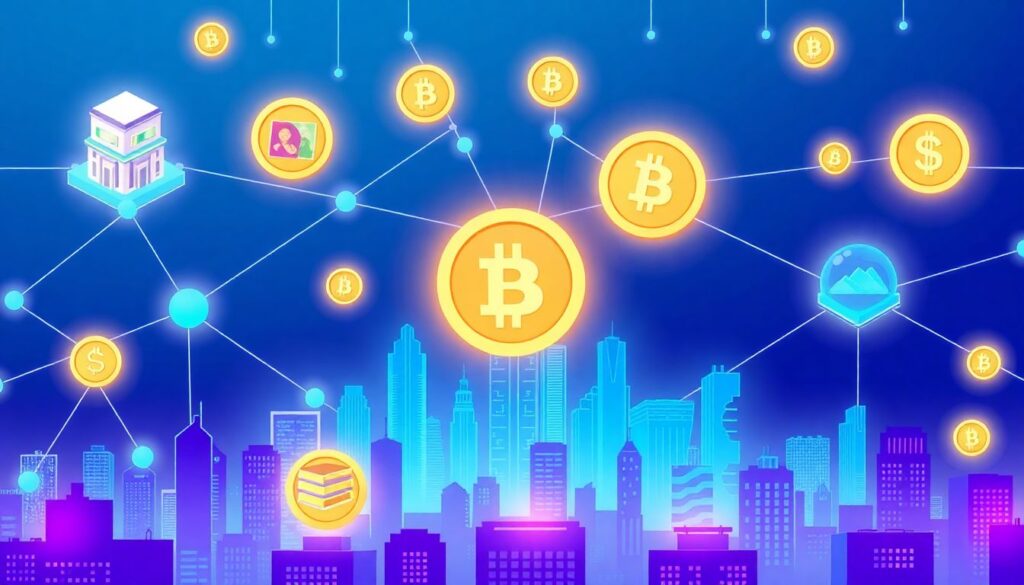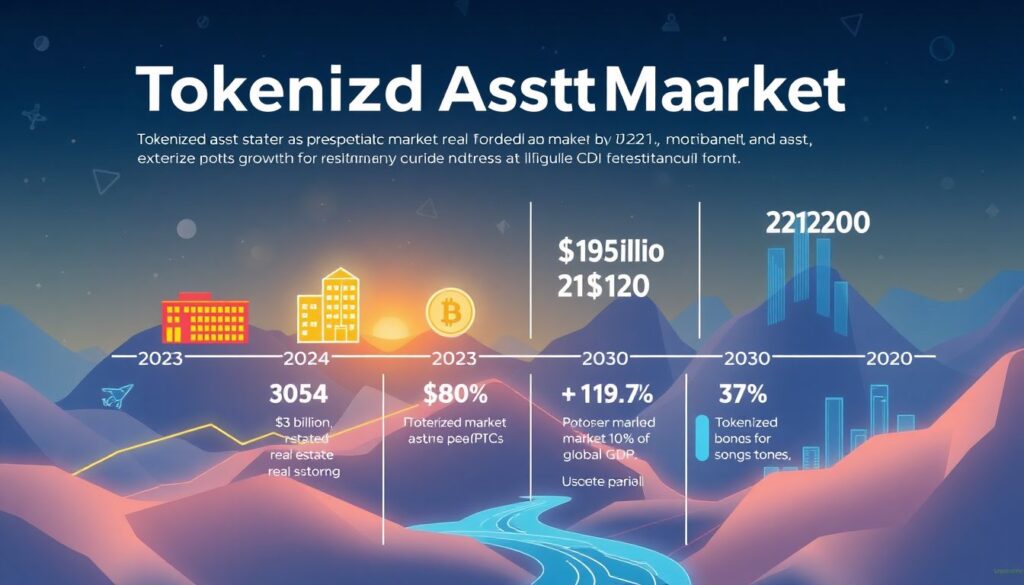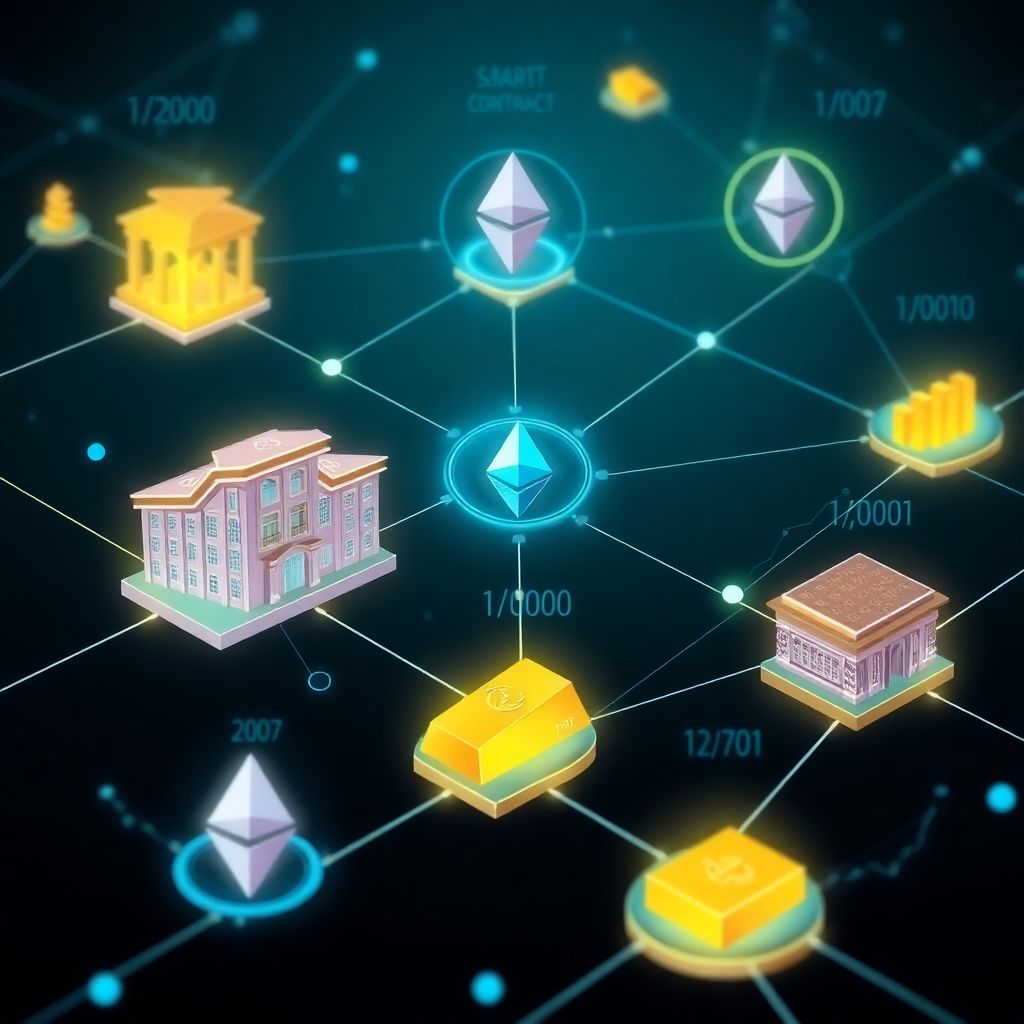Understanding Crypto Asset Tokenization

Crypto asset tokenization refers to the process of converting ownership rights of a physical or digital asset into a blockchain-based token. These tokens can represent virtually anything—real estate, artwork, company shares, or commodities—and are programmable, divisible, and easily transferable. The core idea is to bring real-world assets (RWAs) into the digital realm, enhancing liquidity, transparency, and accessibility.
At its core, tokenization leverages blockchain technology to create a digital representation of an asset that can be traded peer-to-peer without intermediaries. This is particularly impactful for traditionally illiquid markets like real estate, where tokenization allows fractional ownership and global trading. For example, a $1 million commercial property could be divided into 1,000 tokens, each worth $1,000, enabling broader investor participation.
Real-World Applications of Tokenized Assets
The practical implementation of tokenization is already underway across several industries. One of the most prominent examples is real estate. Companies like RealT and Brickblock allow investors to buy fractional ownership in rental properties using blockchain tokens. These tokens entitle holders to a share of rental income, distributed via smart contracts.
Another growing use case is in the art world. Masterworks, a platform for tokenized fine art, enables users to invest in shares of high-value paintings by artists like Banksy and Picasso. By tokenizing artworks, the platform unlocks liquidity in an otherwise illiquid market and lowers the barrier to entry.
In the financial sector, tokenized government bonds and corporate debt are gaining traction. For instance, in 2022, the European Investment Bank issued a €100 million digital bond on the Ethereum blockchain, streamlining issuance and settlement processes.
Technical Breakdown: How Tokenization Works
Tokenizing an asset involves several key steps, typically facilitated by a combination of legal and technical frameworks:
– Asset Valuation and Legal Structuring: The asset is appraised, and legal entities (such as SPVs) are created to hold and manage the asset.
– Token Design and Smart Contract Deployment: A digital token is created, often adhering to standards like ERC-20 or ERC-1400, with embedded rules for ownership, transfer, and compliance.
– Blockchain Integration: The token is issued on a public or private blockchain, enabling secure, transparent, and immutable record-keeping.
Once tokenized, the asset can be traded on decentralized exchanges (DEXs) or regulated marketplaces, depending on the jurisdiction and asset class.
Benefits and Challenges of Tokenizing Real-World Assets
Tokenization offers a compelling set of advantages that can transform traditional finance and investment models:
– Increased Liquidity: Fractional ownership allows smaller investors to enter markets previously out of reach.
– Automated Compliance and Settlement: Smart contracts reduce administrative overhead and mitigate settlement risk.
– Global Accessibility: Blockchain infrastructure makes it easy to reach international investors without relying on traditional banking rails.
However, challenges remain. Regulatory uncertainty is a significant barrier, especially when tokenized assets resemble securities. Jurisdictions differ in how they classify and govern such instruments. Additionally, custody and asset verification require trusted intermediaries, which can reintroduce centralization.
Real Numbers: Market Growth and Adoption

According to a 2023 report by Boston Consulting Group, the tokenized asset market could reach $16 trillion by 2030, representing 10% of global GDP. As of 2024, over $3 billion in real estate has already been tokenized, and the tokenized bond market is projected to grow at a CAGR of 35% over the next five years.
BlackRock, the world’s largest asset manager, has also entered the space. In March 2024, it launched the BlackRock USD Institutional Digital Liquidity Fund on Ethereum, signaling institutional interest in tokenized money market funds.
The Road Ahead: What Comes Next?

As blockchain infrastructure matures and regulatory clarity improves, we can expect tokenization to move from niche to mainstream. Central banks are experimenting with tokenized currencies, and financial institutions are exploring tokenized collateral for DeFi integrations.
Future developments may include:
– Interoperable Standards: Cross-chain communication protocols will allow tokens to move seamlessly between blockchains.
– Regulatory Sandboxes: Governments may adopt flexible frameworks to test and refine tokenization models.
– Retail Integration: Platforms could embed tokenized assets into everyday financial apps, enabling users to invest in everything from real estate to carbon credits with a few taps.
In essence, tokenization is not just a technological trend—it’s a paradigm shift in how we define and trade value in the digital age. As barriers fall and infrastructure improves, the tokenized economy may become as ubiquitous as the internet itself.

